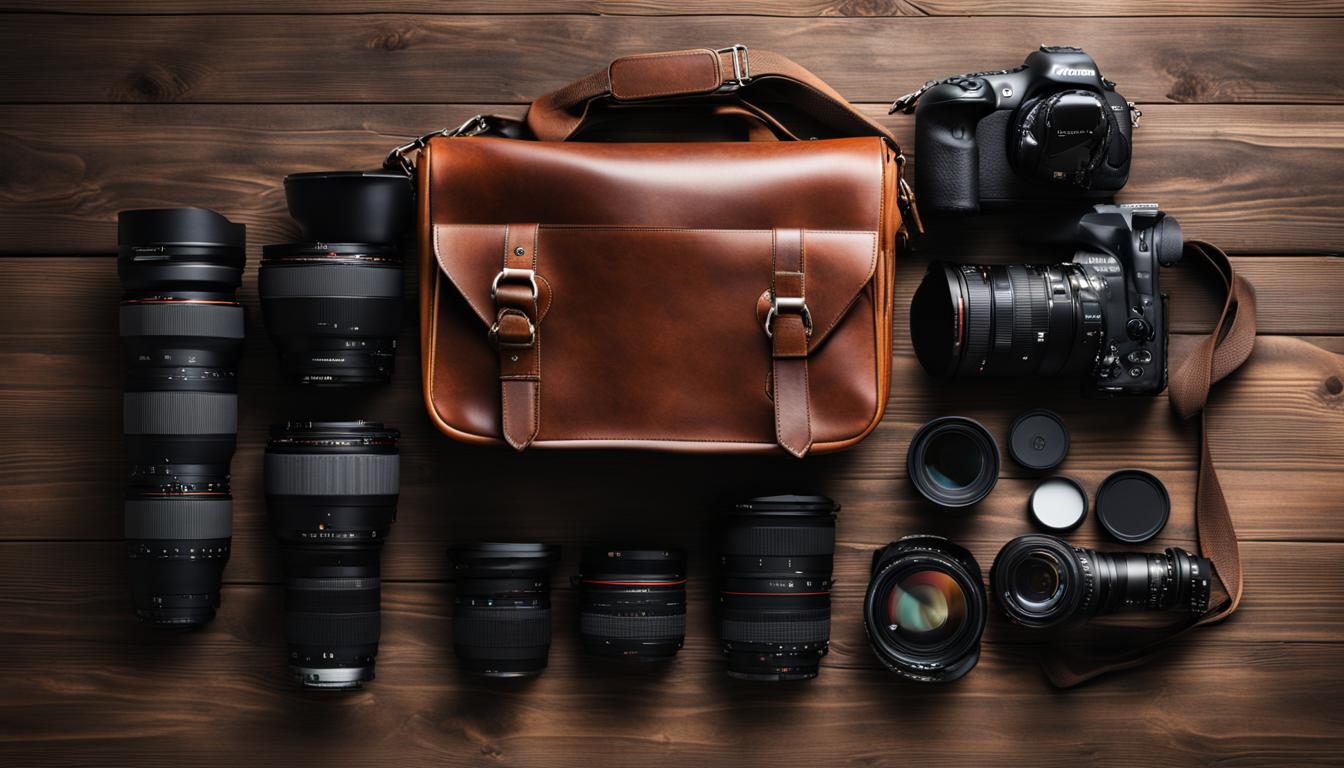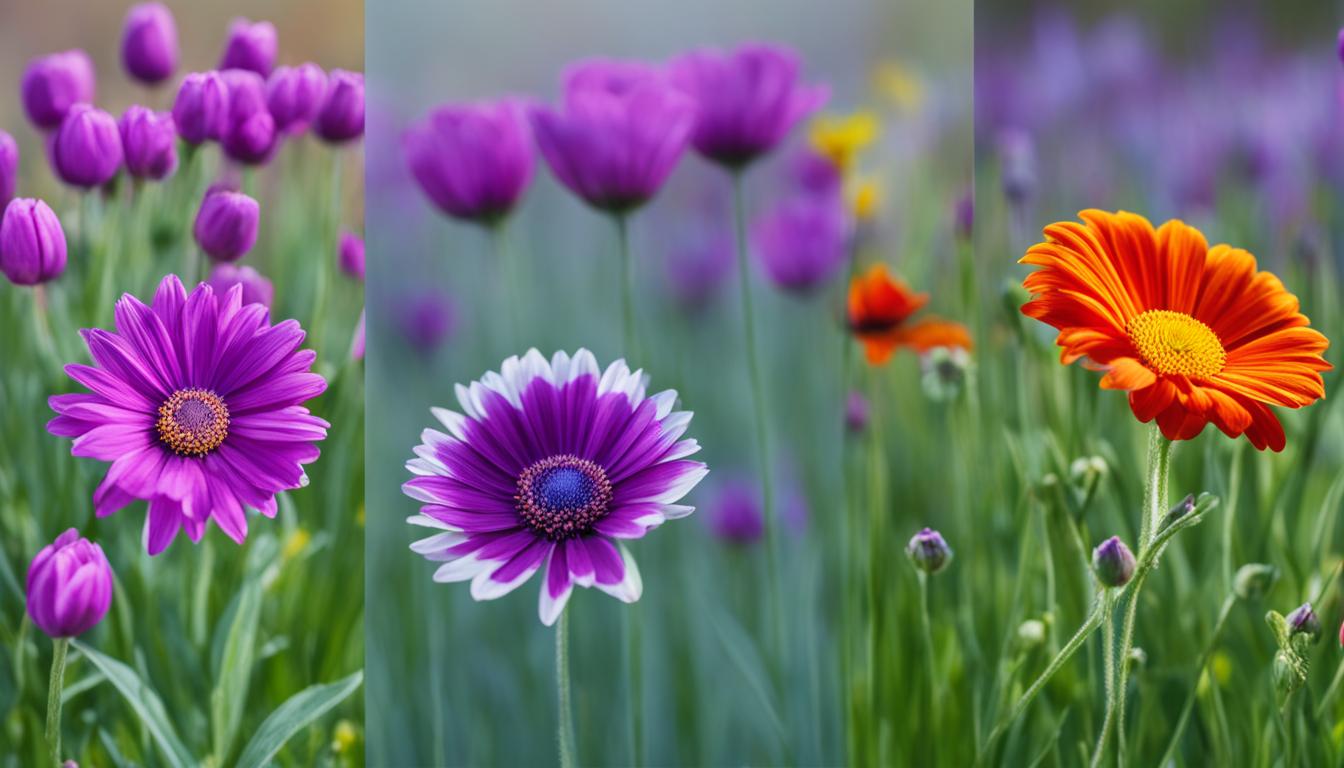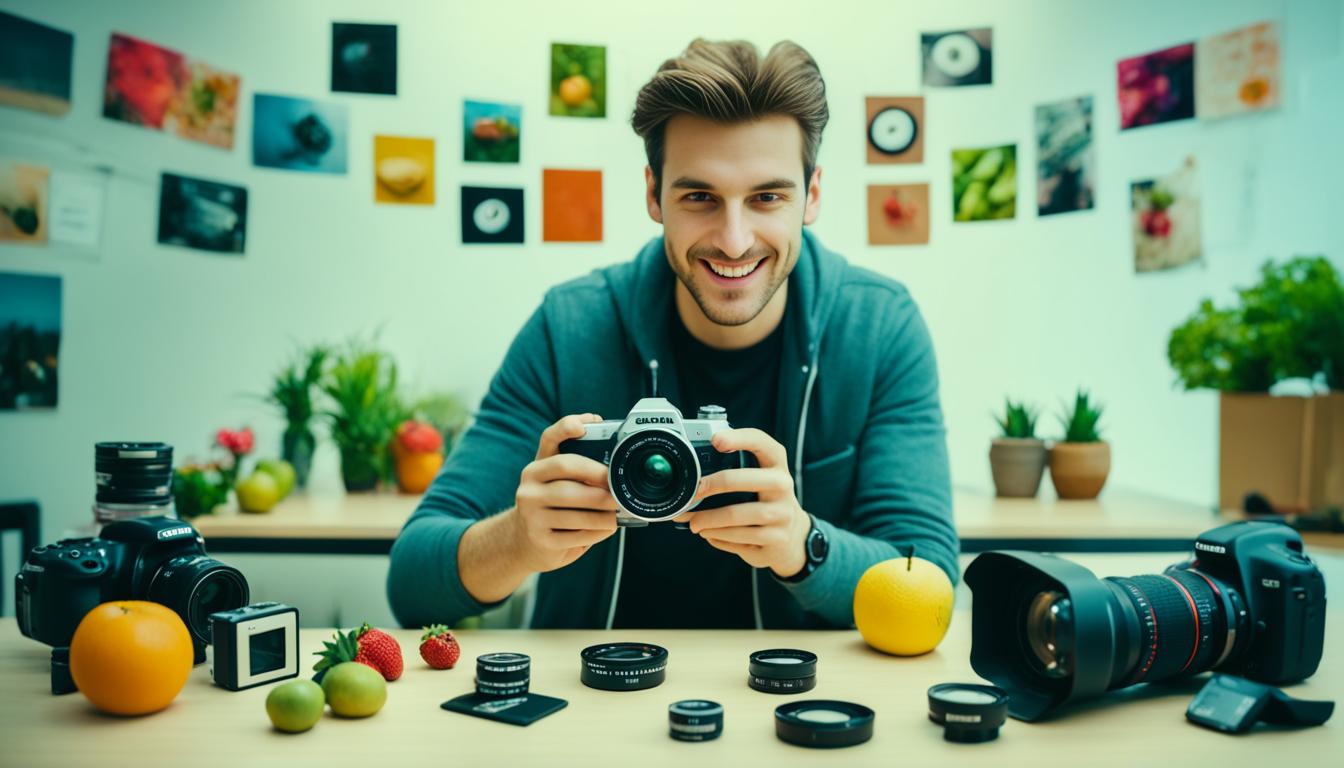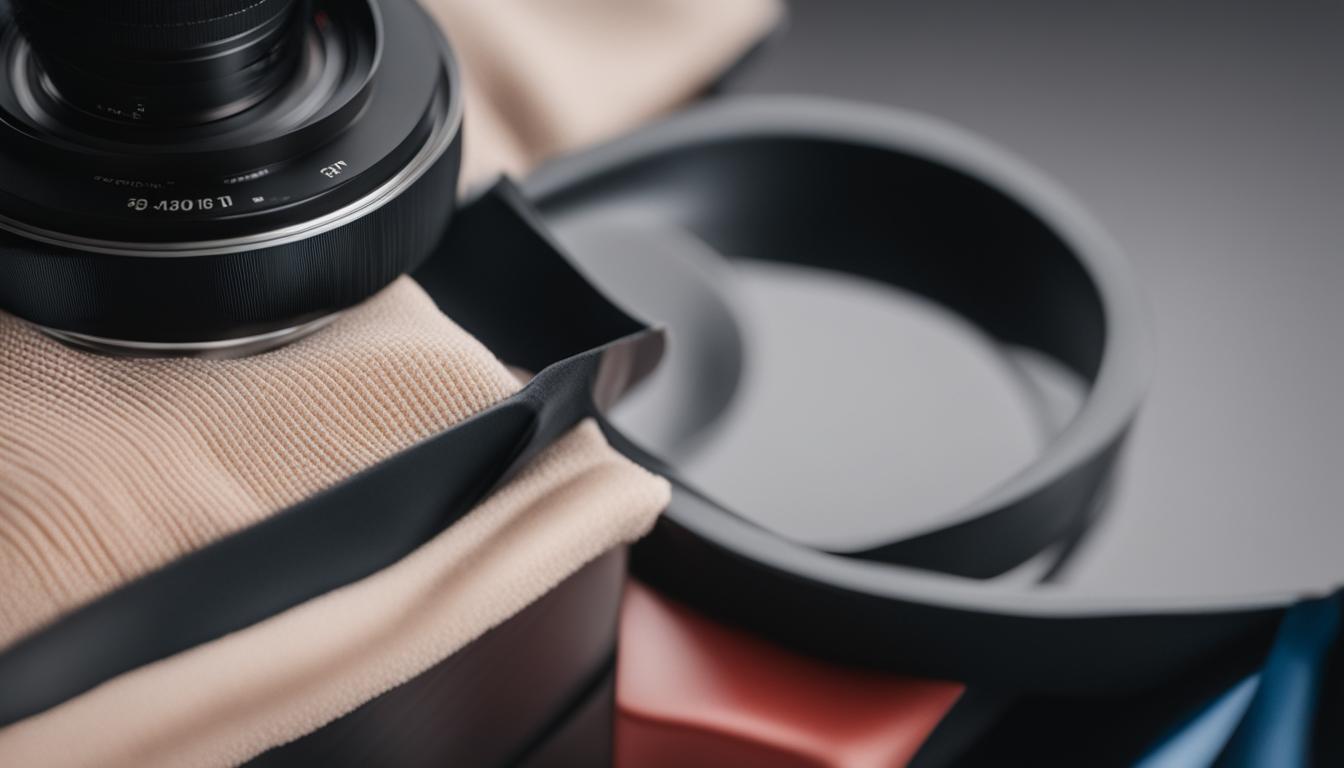Are you a beginner photographer looking to dive into the world of photography? We’ve got you covered! In this comprehensive guide, we will walk you through all the essential photography gear you need to kickstart your journey. From must-have camera accessories to essential equipment, we’ll ensure you’re equipped with everything you need to capture stunning photos.
Key Takeaways:
- Investing in the right camera gear is crucial for beginners to achieve optimal results.
- Camera accessories such as lenses, tripods, and memory cards are essential for enhancing your photography skills.
- Editing software plays a vital role in post-processing and adding creative touches to your images.
- Mastering white balance and understanding its importance can greatly enhance your photographs.
- Artificial lighting and computer equipment are additional tools that can take your photography to the next level.
Choosing the Right Camera for Beginners
When it comes to exploring the world of photography, choosing the right camera is the first step on your journey. As a beginner, you want a camera that strikes the perfect balance between functionality, affordability, and quality. Two popular options for beginners are DSLR cameras and mirrorless cameras.
DSLR vs Mirrorless:
DSLR (Digital Single-Lens Reflex) cameras have been the go-to choice for photographers for many years. They offer a wide range of lenses, excellent image quality, and advanced features. On the other hand, mirrorless cameras, as the name suggests, don’t have a mechanical mirror, resulting in a more compact and lightweight design. They are known for their electronic viewfinders, which provide a real-time preview of the image.
Nikon D5600 and Canon EOS Rebel T7i:
When it comes to camera options specifically tailored for beginners, the Nikon D5600 and Canon EOS Rebel T7i are two fantastic choices. These cameras strike the perfect balance between functionality and price, making them ideal for photographers who are just starting out.
Nikon D5600:
Key features of the Nikon D5600:
- 24.2-megapixel APS-C CMOS sensor
- 3.2-inch vari-angle touchscreen LCD
- 39-point autofocus system
- Built-in Wi-Fi and Bluetooth connectivity
Canon EOS Rebel T7i:
Key features of the Canon EOS Rebel T7i:
- 24.2-megapixel APS-C CMOS sensor
- 3.0-inch vari-angle touchscreen LCD
- 45-point all cross-type autofocus system
- Built-in Wi-Fi, NFC, and Bluetooth connectivity
Both the Nikon D5600 and Canon EOS Rebel T7i offer intuitive controls, excellent image quality, and the ability to expand your photography skills as you grow. Whether you choose Nikon or Canon, both brands provide a wide range of lenses and accessories to complement your camera.
Remember, the camera is just a tool. What truly matters is how you use it to capture your unique perspective and tell your visual stories. Now that you have an overview of camera options for beginners, let’s dive deeper into essential lenses for aspiring photographers.
Essential Lenses for Beginner Photographers
A good lens can make a significant difference in the quality of your photos. When starting out in photography, it’s important to invest in lenses that suit your needs and preferences. In this section, we’ll explore the essential camera lenses for beginners, including prime lenses and zoom lenses. Two popular options for beginners are the Nikon 50mm f/1.8D and the Canon EF 50mm f/1.8.
Prime Lenses
Prime lenses have a fixed focal length, which means they don’t zoom in or out. However, they offer better image quality and are ideal for specific types of photography, such as portraits and low-light situations. These lenses allow you to create stunning bokeh (blurred background) effects and capture sharp, detailed images.
Zoom Lenses
Zoom lenses provide the flexibility to adjust the focal length, allowing you to zoom in and out without changing lenses. They are great for various types of photography, including landscapes, wildlife, and sports. Zoom lenses provide versatility in framing your shots and capturing subjects at different distances.
For beginner photographers, the Nikon 50mm f/1.8D and the Canon EF 50mm f/1.8 are excellent options to consider. These prime lenses offer a wide aperture of f/1.8, allowing for excellent low-light performance and beautiful background blur. They are also affordable, making them a popular choice for beginners looking to enhance their photography skills.
Take a look at the image below to see the Nikon 50mm f/1.8D lens:
| Lens | Aperture | Focal Length | Price |
|---|---|---|---|
| Nikon 50mm f/1.8D | f/1.8 | 50mm | $139 |
| Canon EF 50mm f/1.8 | f/1.8 | 50mm | $125 |
Other Must-Have Accessories for Beginners
Aside from your camera and lenses, there are several other photography accessories that every beginner should have. These accessories will not only enhance your photography experience but also allow you to experiment with different techniques and styles. Let’s explore the must-have accessories for beginner photographers:
1. Tripod
A tripod is an essential accessory for achieving stability and sharpness in your photos. It is especially useful for long-exposure shots, macro photography, and self-portraits. A sturdy tripod ensures that your camera remains steady, resulting in crisp and clear images.
2. Memory Card
A memory card is where all your precious photos are stored. Investing in a high-quality memory card with ample storage capacity is crucial to ensure that you don’t run out of space during a photoshoot. Look for memory cards with fast read and write speeds to prevent any delays in capturing or reviewing images.
3. Camera Bag
A reliable camera bag is essential for safely and conveniently transporting your camera and accessories. Look for a bag that provides adequate padding to protect your gear from accidental bumps or drops. Consider the size and compartments of the bag to accommodate your camera body, lenses, memory cards, and other accessories.
4. Flash
A flash is a valuable accessory for capturing well-lit photos in low-light situations or when you need to add creative lighting effects to your images. It provides an extra burst of light to illuminate your subject, resulting in more vibrant and well-exposed photos.
5. Batteries
Having extra camera batteries is essential, especially during long photoshoots or when you’re traveling and don’t have immediate access to charging facilities. Ensure that you have spare batteries fully charged and ready to go, so you never miss a great shot.
6. Filters
Filters are versatile accessories that allow you to control and manipulate light, colors, and reflections in your images. They can enhance the overall quality and aesthetics of your photos. Popular filters include polarizing filters to reduce glare and enhance colors, neutral density filters for long-exposure photography, and graduated filters for balancing exposure in landscape photography.
“Accessories are like the icing on the cake, enhancing your photography skills and allowing you to explore new creative possibilities.”
With these essential accessories in your photography toolkit, you’ll be well-prepared to capture stunning images and elevate your skills as a beginner photographer.
Next, let’s dive into the world of editing software for beginners and explore the tools that will help you bring your photos to life.

| Accessory | Description |
|---|---|
| Tripod | An essential accessory for stability and sharpness in photos |
| Memory Card | Stores photos and ensures ample storage capacity |
| Camera Bag | Provides safe and convenient transportation for camera and accessories |
| Flash | Adds extra light to low-light situations or creative lighting effects |
| Batteries | Extra batteries for extended shooting or travel |
| Filters | Manipulate light, colors, and reflections in photos |
Editing Software for Beginners
Editing software plays a crucial role in enhancing and refining your photos to achieve the desired results. As a beginner photographer, investing in the right editing software can significantly elevate your images. Let’s explore some popular options:
Adobe Lightroom:
Adobe Lightroom is a go-to choice for beginners and professionals alike. Its user-friendly interface and powerful editing capabilities make it an excellent tool for editing and organizing your photos. With Lightroom, you can adjust exposure, colors, contrast, and apply various filters to enhance the overall look of your images.
Adobe Photoshop:
Adobe Photoshop is a more advanced editing software that offers extensive retouching tools and unlimited creative possibilities. While it may have a steeper learning curve for beginners, mastering Photoshop can give you complete control over your images. From removing blemishes to creating stunning compositions, Photoshop is widely regarded as the industry standard for professional photo editing.
Adobe Bridge:
Adobe Bridge is an excellent companion to Adobe Lightroom and Photoshop. It provides a seamless way to organize, manage, and preview your photos. With Bridge, you can easily browse through your image library, add metadata, and apply keywords for efficient organization and retrieval.
Photoshop Elements:
If you’re looking for a more affordable and simplified version of Adobe Photoshop, Photoshop Elements is a great option. It retains many of the essential features while being more accessible to beginners. Photoshop Elements offers a user-friendly interface and includes various tools for enhancing your photos.
Whether you choose Adobe Lightroom, Adobe Photoshop, Adobe Bridge, or Photoshop Elements, investing in editing software is essential for taking your photography to the next level. These tools provide the flexibility and control you need to transform your raw captures into stunning works of art.
The Importance of White Balance
White balance plays a crucial role in photography as it determines the color temperature of your photos. Achieving accurate white balance is essential to ensure natural-looking colors in your images.
When the white balance is correct, the colors in your photos will appear as they do in real life. This is particularly important when shooting in different lighting conditions, as different light sources can affect the color cast in your images.
To set the correct white balance, you can use tools such as a gray card or an expodisc. These aids help you measure the color temperature of the light and adjust your camera settings accordingly.

Using a gray card involves placing it next to your subject under the same lighting conditions. By taking a photo of the gray card and using it as a reference during post-processing, you can adjust the white balance to eliminate any unwanted color casts.
An alternative to a gray card is an expodisc. This tool is held in front of your lens to measure the color temperature of the light before taking your shot. By capturing a photo with the expodisc in place, you can use it as a reference point to set the correct white balance during post-processing.
By ensuring accurate white balance in your photos, you can enhance the overall quality and appeal of your images, resulting in more visually pleasing and professional-looking photographs.
Tripods for Stability in Photography
When it comes to photography, achieving stability is crucial, especially in low-light situations or when capturing long-exposure shots. That’s where tripods come in, providing a steady base for your camera and ensuring sharp and blur-free images. In this section, we will explore two popular photography tripods: the Joby Gorillapod 3K and the Manfrotto Compact Action Tripod.
Joby Gorillapod 3K
Known for its versatility, the Joby Gorillapod 3K offers a unique and flexible design that makes it perfect for photographers on the go. Its adjustable legs can be wrapped around various objects, giving you the freedom to mount your camera practically anywhere. Whether you’re shooting in unconventional angles or need stability on uneven surfaces, the Joby Gorillapod 3K adapts to your needs. It’s lightweight and compact, making it a great option for travel photography or vlogging.
Manfrotto Compact Action Tripod
An excellent choice for landscape or action photographers, the Manfrotto Compact Action Tripod combines stability and functionality. Its extendable legs allow you to adjust the height to your desired level, ensuring steady shots even on uneven terrain. The built-in joystick head provides smooth and precise camera movements, enabling you to capture those dynamic moments with ease. This tripod is sturdy and durable, offering reliable support for your camera setup.
Both the Joby Gorillapod 3K and the Manfrotto Compact Action Tripod are popular options among photographers, each with its own unique features and benefits. Whether you’re a beginner or a seasoned pro, having a tripod in your photography gear arsenal is essential for achieving professional-quality shots.
| Joby Gorillapod 3K | Manfrotto Compact Action Tripod |
|---|---|
| Flexible design Lightweight and portable Versatile mounting options |
Sturdy and durable Extendable legs for adjustable height Precise joystick head for smooth movements |
| Perfect for travel and vlogging Ideal for unconventional angles Great for on-the-go photographers |
Excellent for landscape and action photography Reliable support on uneven terrain Captures dynamic moments effortlessly |
| Price: $XX.XX | Price: $XX.XX |
The Role of Artificial Lighting in Photography
While natural lighting is often preferred in photography, learning to work with artificial lighting can greatly expand your creative possibilities. Whether you’re shooting in a studio or indoors, having the right photography lighting equipment is essential to achieve the desired effect.
Continuous Lighting
Continuous lighting is a type of artificial lighting that remains on once switched on. It provides a constant light source that allows photographers to see how the lighting affects the subject in real-time. Continuous lighting is versatile and can be modified to create different effects, making it suitable for various photography genres such as portrait, product, and food photography.
One popular continuous lighting option is the Yongnuo YN568EX III which offers adjustable power settings and a built-in modeling light for previewing the lighting setup.
Strobe Lighting
Strobe lighting, also known as flash photography, involves using brief bursts of bright light when triggered. Strobes provide more intense lighting compared to continuous lighting, making them ideal for freezing motion or capturing subjects in low-light situations.
If you’re a beginner looking for a strobe lighting option, consider the Nissin i60A. This compact and powerful flash offers TTL capabilities and a high-speed sync feature for more advanced lighting techniques.
Working with artificial lighting opens up a world of creative opportunities. Experiment with different lighting setups to enhance your photographs and bring your vision to life.
The Essential Role of a Computer in Photography
A computer is an indispensable tool for photographers, serving multiple purposes such as storing, organizing, and editing photos. When considering a computer for photography, it is essential to assess various factors to ensure optimal performance in handling large image files and running resource-intensive editing software.
The following are key considerations when evaluating photography computer requirements:
- Processing Power: A fast and efficient processor is vital for handling complex photo editing tasks smoothly. Look for computers equipped with high-performance processors, such as Intel Core i7 or AMD Ryzen processors, which offer excellent processing capabilities.
- RAM: Random Access Memory (RAM) plays a crucial role in enabling seamless multitasking and speeding up photo editing operations. Aim for a computer with a minimum of 8GB RAM, but consider upgrading to 16GB or more if you frequently work with large files or use memory-intensive editing software.
- Video Card: While a dedicated video card is not a necessity for all photographers, it can significantly enhance the performance of editing software, especially when working with advanced graphics processing. Look for computers equipped with dedicated video cards, such as NVIDIA GeForce or AMD Radeon, for smoother editing experiences.
When it comes to choosing a laptop for photography, two popular options are the Lenovo ThinkPad and MSI Gaming Laptop. The Lenovo ThinkPad offers a balance of performance and portability, making it suitable for photographers who require mobility without compromising on power. On the other hand, the MSI Gaming Laptop is known for its robust hardware configuration and exceptional graphics capabilities, making it an excellent choice for photographers with demanding editing requirements.
| Computer | Processor | RAM | Video Card |
|---|---|---|---|
| Lenovo ThinkPad | Intel Core i7 | 16GB | Integrated Intel Graphics |
| MSI Gaming Laptop | Intel Core i7 | 16GB | NVIDIA GeForce RTX 30 Series |
Having the right computer for photography ensures a smooth workflow, allowing you to efficiently manage and edit your photos. Whether you opt for a laptop like the Lenovo ThinkPad or MSI Gaming Laptop, prioritize processing power, RAM, and video card capabilities to maximize your editing potential.
Conclusion
Building your photography gear as a beginner can be overwhelming, but with the right equipment, you can start experimenting and developing your skills. The essential photography gear for beginners includes a camera, lenses, editing software, accessories, and lighting equipment.
Remember that gear is just a tool, and ultimately, your skills and creativity are what will make your photographs stand out. Investing in quality equipment that suits your needs and budget is essential for capturing stunning images. However, it’s important to remember that the best camera or lens alone won’t guarantee great photos; it’s how you use them that matters.
As you continue your photography journey, don’t be afraid to try new techniques, experiment with different settings, and learn from others. Practice, patience, and a passion for storytelling through images will help you develop your unique style. So, grab your camera, explore the world around you, and let your creativity shine!
FAQ
What are the essential photography gear for beginners?
The essential photography gear for beginners includes a camera, lenses, editing software, accessories, and lighting equipment.
What factors should I consider when choosing a camera as a beginner?
As a beginner, it is recommended to choose a DSLR or mirrorless camera that offers the ability to interchange lenses. Popular options include the Nikon D5600 and Canon EOS Rebel T7i.
What are the recommended lenses for beginner photographers?
Prime lenses with a fixed focal length are great for beginners. The Nikon 50mm f/1.8D and Canon EF 50mm f/1.8 are popular options.
What other accessories are essential for beginner photographers?
Other essential accessories include a tripod for stability, a memory card for storage, a camera bag for transportation, a flash for low-light situations, extra batteries for extended shooting, and filters to enhance your photos.
What editing software should beginners use?
Adobe Lightroom is a popular choice for beginners due to its user-friendly interface and powerful editing capabilities. Adobe Photoshop and Adobe Bridge are more advanced options, while Photoshop Elements is a lighter version of Adobe Photoshop.
What is white balance and how can I achieve accurate white balance in my photos?
White balance determines the color temperature of your photos. Tools such as a gray card or an expodisc can help you set the correct white balance in different lighting conditions.
What tripods are recommended for stability in photography?
The Joby Gorillapod 3K is a portable and flexible option, while the Manfrotto Compact Action Tripod offers extendable legs for landscape or action photography.
What lighting equipment should beginners use in photography?
Continuous lighting and strobe lighting are two options for beginners. The Yongnuo YN568EX III and Nissin i60A are recommended flash options.
What factors should I consider when choosing a computer for photography?
When choosing a computer for photography, consider factors such as processing power, RAM, and video card capabilities. Recommended options include laptops such as Lenovo ThinkPad and MSI Gaming Laptop.
What is the role of gear in photography?
Gear is just a tool in photography, and while having the right equipment is important, your skills and creativity ultimately make your photographs stand out.
What Photography Gear is Essential for Capturing Astro Photography?
When capturing astro photography, choosing the right equipment is crucial. Essential gear includes a camera with manual settings, a wide-angle lens with a low aperture, a sturdy tripod, and a remote shutter release. A star tracker can also be beneficial for longer exposures, capturing more details in the night sky.




